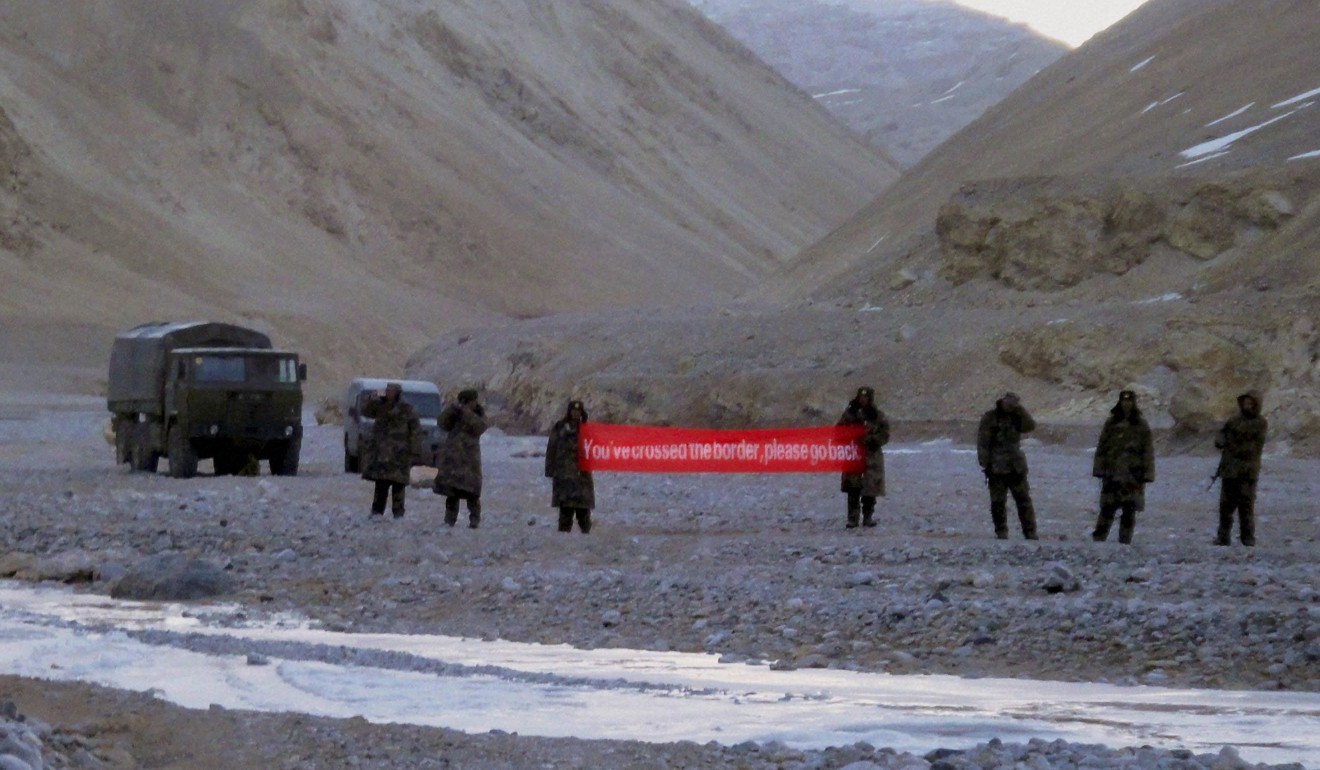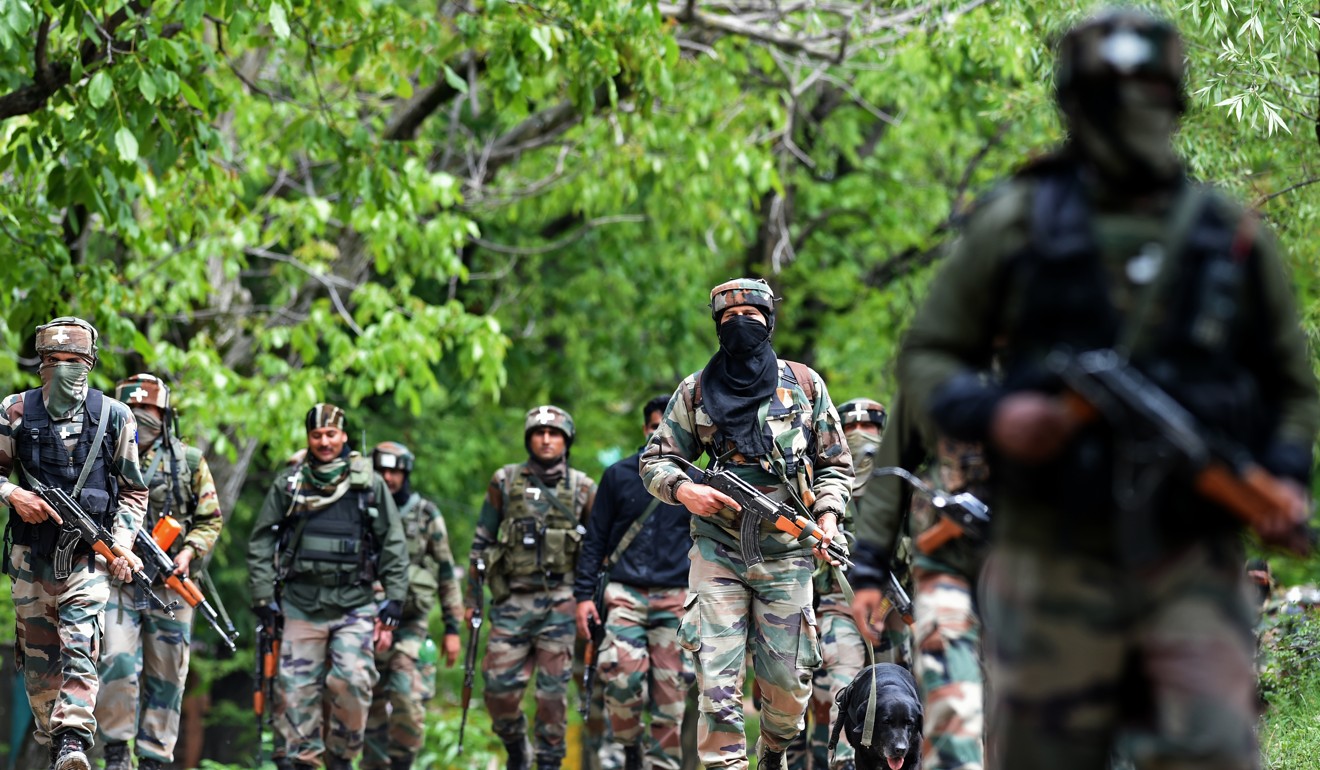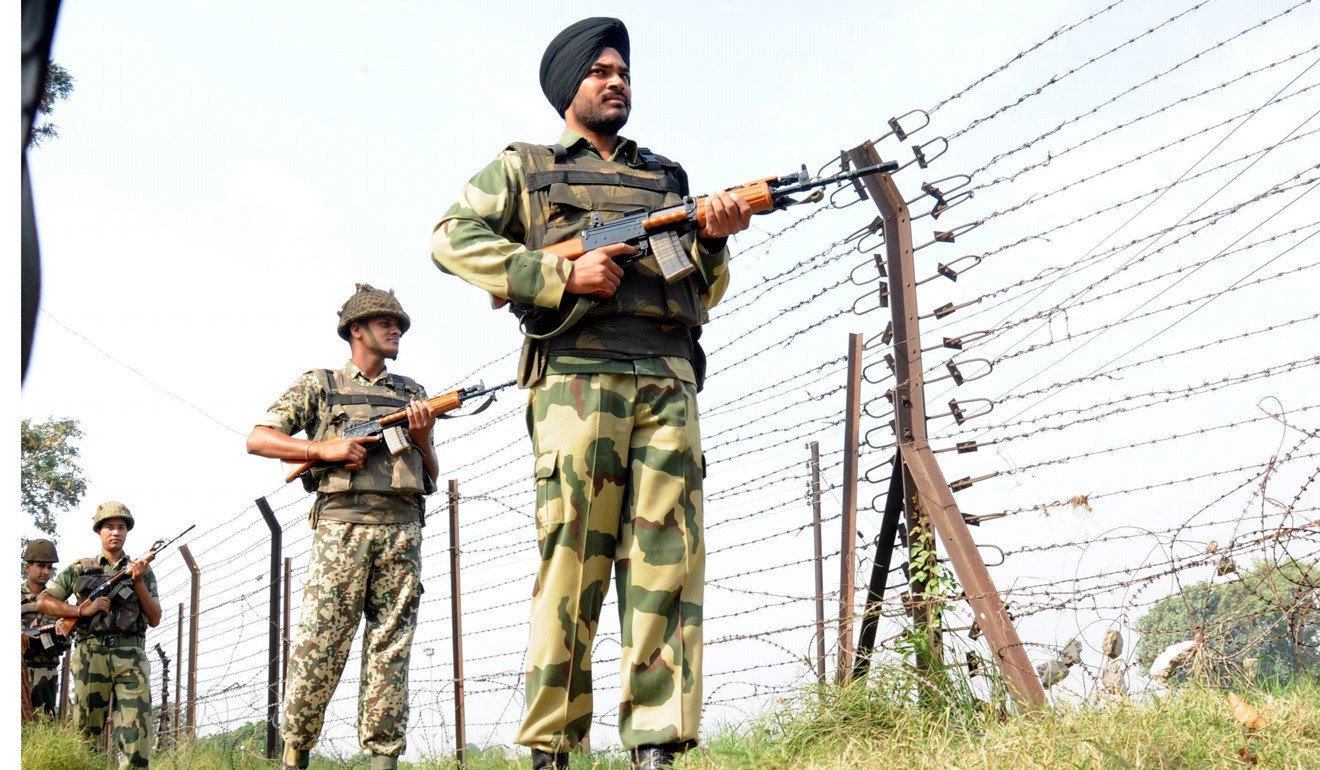A usually quiet stretch of land in the desolate mountains of the Himalayas that separates China and India has grabbed international attention this week, as tensions escalated over a fresh border dispute between the rising Asian powers.
Although it remains largely unclear what exactly happened along an unmarked border in the remote tri-junction of Sikkim, Tibet and Bhutan, as many as 3,000 troops have been deployed by each side in a “virtually eyeball-to-eyeball confrontation”, Indian media reported, citing army sources.
Diplomatic observers from both countries said they were surprised that China’s building of a road in the Donglang area, also known as Doka La, so quickly turned into the biggest military stand-off between the two armies in years.
The incident happened at a delicate time in the bitter, long-running territorial dispute between the world’s two most populous nations. It has lasted for half a century, and includes a bloody war in the 1960s and sporadic skirmishes since.
Analysts believe the face-off once again shows the complexity of the border disputes, which remain a major source of instability in bilateral ties. It also underlines the tense relations amid deep-rooted mistrust and hostility between China and India as they jostle for dominance in the region.
A heated war of words broke out over the past week, with both sides accusing each other of trespassing into their territory and stirring up tensions.
Beijing confirmed it has closed the Nathu La pass, a route for Indian pilgrims opened in 2015 to visit Tibet’s Mount Kailash and Lake Manosawar, both sacred to Hindus and Buddhists, due to the situation.
At over 4,300 metres above sea level, the Nathu La Pass in Sikkim was first opened for trade in 2006 as one of three border posts between China and India.
The fact that the troop face-off occurred just days ahead of Indian Prime Minister Narendra Modi’s visit to Washington was hardly a coincidence for many pundits.
“There is actually a lot of confusion as to where this incident happened. It is not even clear if it was on the Sino-Indian border,” said Rajeswari Rajagopalan, a senior fellow at the Observer Research Foundation in New Delhi.
But the timing of the incident “cannot be a mere coincidence”, she said.
While similar border flare-ups have occurred during high-profile bilateral visits between India and China, the latest, which came so close to Modi’s visit to the US, is probably unprecedented.
 Chinese troops hold a banner that reads: “You've crossed the border, please go back,” in Ladakh, India in this file photo. Tensions between the world’s two most populous nations have once again bubbled over. Photo: AP
Chinese troops hold a banner that reads: “You've crossed the border, please go back,” in Ladakh, India in this file photo. Tensions between the world’s two most populous nations have once again bubbled over. Photo: AP
Mohan Guruswamy, chairman of Centre for Policy Alternatives Society, an Indian think tank, said he believes “a clear pattern is now emerging”, although adequate details to ascertain which side did the provoking were not forthcoming.
“The Indian public believes it is China that is ratcheting up the tensions. I hope it is a coincidence but it strains one’s credulity,” he said.
Wang Dehua, director of the Institute for Southern and Central Asian Studies at the Shanghai Municipal Centre for International Studies, said the Sikkim border between China and India has been a source of diplomatic and military tensions in bilateral relations.
“But it is nothing short of a miracle that the Sino-Indian frontier has been largely quiet, without a single shot fired for over two decades” apart from periodic incursions and scuffles, he said.
He noted that China has yet to unequivocally accept Sikkim – where for centuries China claimed suzerain authority – as part of India.
Beijing in 2003 implicitly recognised the fact that Sikkim joined India with a referendum in 1975 in its maps, while former Premier Wen Jiabao, during a visit to India in 2005, claimed that Sikkim was no longer an issue in bilateral relations.
India’s Sikkim sector, which has about 200 kilometres of border with Tibet, is only a small part of the more than 4,000km India-China border, which is largely settled.
“Along with a flurry of intense manoeuvrings targeting China, including the planned naval exercise with the US and Japan in the Bay of Bengal later this month, India apparently wanted to put pressure on China before Modi’s Washington trip to extract concessions from Beijing on the border issue,” Wang said.
But Jagannath Panda, head of the East Asia Centre of the Institute for Defence Studies and Analyses in New Delhi, challenged such a view, saying China wanted to send a message that India shouldn’t overlook its relationship with China as it involves neighbourhood politics.
“China is trying to make a statement that it is high time India accords priorities to address the matters relating to China, including the boundary issue,” he said.
Bhutan, a small kingdom strategically located between China and India at the eastern end of the Himalayas, has been dragged into the dispute due to the differences between its two neighbours over where the narrow but strategically important junction lies.
While Beijing has insisted that the Donglang area is a disputed one between China and Bhutan, and accused India of meddling in Bhutan’s internal affairs, India has accused China of crossing its boundary and destroying two of its bunkers with a bulldozer.
Bhutan said on Wednesday it has issued a demarche, or formal statement, to Beijing protesting against China’s trespassing while urging it to “refrain from unilaterally altering the status quo on the ground” by building a new road in the contested area, pending a final settlement of border disputes.
The statement was issued through China’s diplomatic mission in New Delhi on June 20, as Bhutan does not have formal diplomatic ties with China.
Along with India, Bhutan is one of China’s last land neighbours with which it has yet to settle border disputes, despite 24 rounds of talks over three decades.
According to Indian scholars, the Chumbi valley in the Donglang region, located in Tibet’s Yadong county, is a disputed territory between China and Bhutan. It holds immense strategic importance for both China and India as it could be used to sever Delhi’s access to its northeastern states.
China’s military on Thursday rejected Bhutan’s allegation that it violated its territory, saying its troops operated on “Chinese territory” and also asking India to “correct” its “wrongdoing”.
Rajeev Ranjan Chaturvedy, a research fellow at the Institute of South Asian Studies of National University of Singapore, said Chinese encroachment in the Bhutanese territory was the main reason for the latest stand-off.
“China’s incremental territorial grab is not new and it does not appear to be a coincidence. China is upset about India’s standing up for Bhutan at Doko La. When China expects others to respect Chinese territorial sovereignty, such intimidating behaviour will complicate the situation further and may amplify the trust deficit further,” he warned.
Jagannath Panda noted that Bhutan is central to India’s security interests in the Himalayan sub-region. Bhutan has a border dispute with China, but what could not be overlooked was the Bhutan-India-China “tripartite” strategic triangle in the Eastern Himalayan region, Panda said.
“The Indian concern is that China may have a strategic edge if the border negotiation between China and Bhutan succeeds,” he said. “Bhutan’s holding bilateral border talks with China is linked to India’s national interests in the Eastern Himalayan region. Hence, it is expected that Bhutan should consult India on the matter.”
But from China’s perspective, Beijing was trying to make the case that Bhutan must start thinking independently and start taking independent decisions, and not care so much about India’s feelings on the issue, Panda said.
“China wants to pressure India, and wants to make capital out of the issue at both a bilateral and trilateral level with Bhutan,” he said.
Wang Dehua also said that India was behind the stalled border talks between China and Bhutan.
Pundits believe the ongoing stand-off is unlikely to escalate into a military conflict despite recent remarks by Indian army chief Bipin Rawat, who said during an inspection of the disputed Sikkim border that India was ready for a two-and-a-half front war with China and Pakistan while tackling internal security threats.
 Indian soldiers patrol in the Shopian district of Kashmir in May in the volatile south of the disputed Himalayan region. Photo: AFP
Indian soldiers patrol in the Shopian district of Kashmir in May in the volatile south of the disputed Himalayan region. Photo: AFP
They said while such border incidents were a cause of concern, both countries had institutional mechanisms to manage their differences.
“Therefore, one should not read too much into it. Certainly, any kind of military conflict is not in the interest of any country and political leaders of both the countries are fully aware of their priorities,” said Chaturvedy of National University of Singapore.
Sun Shihai, a researcher at the Chinese Academy of Social Sciences, said both governments should stay alert to soaring animosity and nationalist sentiments in their respective countries.
“We are seeing an unfolding strategic competition between China and India. There is no point denying that political ties have deteriorated in recent years despite closer economic and trade links and we have yet to see signs of improvement.
“But peace and stability is in both countries’ interests despite simmering rifts and challenges and both countries must try their best to prevent their border row from spoil the overall bilateral ties. Neither of us will emerge as winners in the event of confrontations or even conflicts,” he said.
Wang said the Washington factor also figured prominently in Sino-Indian relations.
“India is watching closely where the relations between China and the US are headed. As long as Beijing and Washington can manage to keep their ties on the right track, I don’t see any possibility for a conflict between China and India,” he said.
Chinese defence ministry spokesperson Wu Qian called Rawat’s remarks “extremely irresponsible” and urged India to “stop clamouring for war” and learn “historical lessons”, referring to India’s defeat in the 1962 war.
In an editorial on Wednesday, the nationalist tabloid Global Times, controlled by the Communist Party mouthpiece People’s Daily, was belligerent and called for tougher responses from Beijing.
“This time the Indian side needs to be taught the rules and it should come to realise that there is a price to pay for such provocations,” it said.
It claimed India cannot afford a showdown with China on border issues, citing data such as India’s economic output, which is one-quarter of China’s, and its annual defence budget, which is just one-third of China’s.
The 1962 border war, according to several experts, still looms large in the minds of a lot of Indians.
“India has yet to walk out of the shadow of the 1962 war. “India apparently feels the old days were gone and it’s become a strong nation on a par with China,” Wang Dehua said.
Rajagopalan agreed, describing India’s crushing defeat over five decades ago as “a traumatic experience for India”.
“The 1962 war definitely has had an impact on Indian thinking, and still does.
“Historical experiences are a factor in any national identity: China still talks about the century of humiliation, to give a relevant example. But that is not what is determining India’s strategy towards China,” she said.
But Guruswamy said it was ridiculous to accept the notion that India was still haunted by the 1962 war. “Much water has flowed under the bridge since 1962. In these days, with both countries capable of an unacceptable level of violence, it would be wise to forget such old notions and deal with realities,” he said.
“A major global power shift is underway. The fates of India and China in a world of rapid economic, technological and social change are inextricably linked,” he said.
But observers said the longstanding border disputes between the Asian giants were unlikely to see any quick solution as bother sides showed little incentives to work out their differences and accommodate each other’s concerns.
“As long as there is no clarity on the Line of Actual Control between India and China, incursions and border transgressions will occur and continue in the future as well,” Rajagopalan said.
 Indian troops patrol at the border with Pakistan. Many nations are caught up in the decades-long dispute between China and India. Photo: Xinhua
Indian troops patrol at the border with Pakistan. Many nations are caught up in the decades-long dispute between China and India. Photo: Xinhua
Many nations in the region, such as Bhutan and Pakistan, have been caught between the rivalry of the Asian giants, which would further complicate their border disputes.
“Considering the lack of strategic trust, I don’t think we are going to see the settlement of their border disputes any time soon,” Sun said.
Beneath the tensions over the border flap between the two was India’s deep-rooted suspicion about China’s rise.
“It is the strategic uncertainty around China’s growing power and certain Chinese assertive measures that has compelled India to play the balance of power games and forging closer strategic partnerships with the United States, Australia and Japan,” Rajagopalan said.
“China seems to have become quite aggressive in its approach to all neighbours, not just India. Beijing needs to reflect on whether this is the right approach to take,” she said.
India boycotted the belt and road summit in May in Beijing, citing a controversial Chinese-invested project, the China-Pakistan Economic Corridor, which passes through Pakistan-occupied Kashmir, a hotly disputed region claimed by both South Asian nations.
Citing the US$55 billion project, which links Xinjiang and the Gwadar port in Pakistan, Indian experts said China has ambitions to change geopolitical equations in the region and beyond and shown scant regard for India’s core concerns.
India has also been irked by China’s repeated refusal to allow India to join the Nuclear Suppliers Group or become a permanent member of the United Nations Security Council, Sun Shihai said.
Chinese analysts said the country’s threats had been much hyped by Indian media, which often asserted it was trying to encircle India in the Indian Ocean.
No comments:
Post a Comment